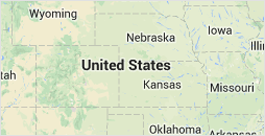Eldon Broady
PHONE NUMBER : -----------
Map

How do Graph Databases Work?
There are a wide variety of databases out there, and which one you use depends on the needs of your organization and the type of data you're working with. One database that more and more organizations have started using are graph databases. A graph database is a great way to sort through connected and complex data. In this article, we'll explain a little bit more about how these databases work.
Are Graph Databases the Same as Relational Databases?
Not really. Relational databases are really good at pulling data from one table of information, which is a functional use case for smaller organizations or programs that aren't dealing with a ton of relationships between data. A graph database is able to handle these kinds of queries on a much larger, interconnected scale.
How Graph Databases Work
Graph databases are a collection of nodes that contain information with labeled relationships between each node. Graph databases are able to store the data along with the relationships between each node of data, meaning it's extremely good at dealing with queries about relationships. They're able to do this much faster than other databases because it makes something that is typically complex and makes it simple. Graph databases are also able to parse multiple datasets thanks to the way they organize and store data. While relational databases usually only draw from one table at a time for queries, the node web that graph databases use allows them to pull from a highly interconnected web of data and find all the relationships quickly when users make a query.
An Example of Graph Databases
A good example of a graph database would be a social network like Facebook. For example, you might notice that Facebook is good at identifying people you might know due to your relationship with people that they know. This is an example of the node network at work finding links between the data.
Implementing Graph Databases in Your Organization
If your organization needs to have a quick, flexible database that is able to efficiently return relationship queries, a graph database might be exactly what you're looking for. Luckily, there are plenty of solutions out there that make implementation a smooth endeavour.
Author Resource:-
Eldon Broady writes about database technologies, graph database, and modern API tools. You can find his thoughts at developer framework blog. For more information about the GraphQL server, check out this site.
